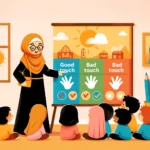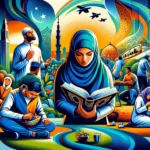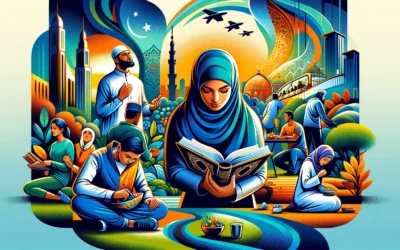Introduction to Eid al-Fitr in North America
Eid al-Fitr, marking the end of Ramadan, is a time of joy and celebration for Muslims around the world. In North America, this festive occasion is a melting pot of cultures, showcasing the rich diversity of the Muslim community. Eid al-Fitr in North America is not just a religious observance but a cultural event that brings together people from various backgrounds, each adding their unique flavor to the celebrations.
Traditional Observances and Prayers
Festive Gatherings and Feasts
Cultural Integration and Adaptations
Eid al-Fitr in North America serves as a vibrant example of how Muslim traditions interweave with local cultural norms, creating unique and inclusive celebrations. In areas with substantial Muslim communities, the observance of Eid goes beyond the confines of individual homes and mosques, spilling into the public sphere with parades, carnivals, and street fairs. These events showcase a blend of Islamic and local American festive elements, illustrating the dynamic and adaptable nature of Muslim cultural expressions.
Cities like New York, Chicago, and Los Angeles, known for their sizable Muslim populations, often host grand Eid celebrations that draw thousands of participants. These public events feature colorful parades with floats and participants dressed in traditional Islamic attire, performing music and dances that trace their roots back to various Muslim-majority countries. At the same time, these celebrations embrace aspects of American festive culture, such as marching bands, street vendors selling a variety of foods, and entertainment activities suited for all ages, creating a festive atmosphere that is both uniquely Islamic and distinctly American.
Street fairs during Eid al-Fitr provide a communal space where people can enjoy games, art, and performances, fostering a sense of community and celebration among attendees. These fairs often serve as cultural showcases, offering a platform for Muslim artists, chefs, and entrepreneurs to share their crafts and culinary delights with the broader community.
Interfaith and Community Outreach
A Unifying Celebration
Eid al-Fitr in North America is a testament to the continent’s cultural mosaic. It brings together people from diverse backgrounds in a celebration of faith, culture, and community. Through its various traditions and observances, Eid al-Fitr promotes unity, understanding, and a shared sense of joy, making it a quintessential part of the North American cultural landscape.
















